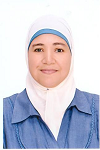
Safaa Mohamed Hassan
National Authority for Remote Sensing and Space Sciences
Egypt
Title: Groundwater exploration and assessments in siwa Oasis, Egypt: Using Radar, ASTER and Geophysical data
Biography
Biography: Safaa Mohamed Hassan
Abstract
The present study aims to investigate the structure; ground water exploration and assessment for the study area using radar and Landsat8 remote sensing data and geophysical data. The quantitative interpretation of the seventeen vertical electrical soundings is carried out to determine the thicknesses and true resistivity values. The final results used for construction four geoelectrical cross-sections which exhibits the six different geological units represented in the study area. The isopach maps are constructed to indicate the variation of the thicknesses of the first, second, third, fourth and fifth units through the studied area. The second layer represents the fresh water aquifer in the study area for upper Miocene age. The results of resistivity interpretation for depth, thickness and resistivity values for different layers indicated that the fresh water bearing aquifer has thickness from 5 to 85m and depth raining from 5 to 25m. The Landsat8 image has been used to study the lithological rock units and lineament analysis. In this paper Robinson-3 level edge enhancement technique was applied on the ALOS radar image to emphasize the predominant fault directions in the study area as well as detection of the buried structures and drainage systems. Two band ratios are proposed in this study (1/5, 8/9 and 4/6) and (1/3, 2/5, and 4/9) for more lithological discrimination of the study area. These studies reveal that the area was dissected by different fault elements of trends E–W, NW–SE, NE–SW and the E-W trend is mostly which control the geometry of the groundwater aquifers in the study area using the analysis of the Landsat8 and RADAR data. In the other hand we evaluate the groundwater for different uses. 39 groundwater samples were collected from the study area during 2014, and were subjected to analysis for chemical characteristics. These data has been used to preliminary evaluation of suitability of groundwater for drinking and irrigation purposes by comparing those parameters with world health organization (WHO) standards and Egyptian standards. Majority of the collected water samples are unsuitable for drinking due to its high salinity and high concentration of iron and manganese. About 82% of the studied water samples which collected from the study area had total hardness ranged between hard and very hard which unsuitable for industry. According to salinity index, SAR, Na%, magnesium hazard and Kelley ratio most of the collected groundwater samples are unsuitable for irrigation purposes.
